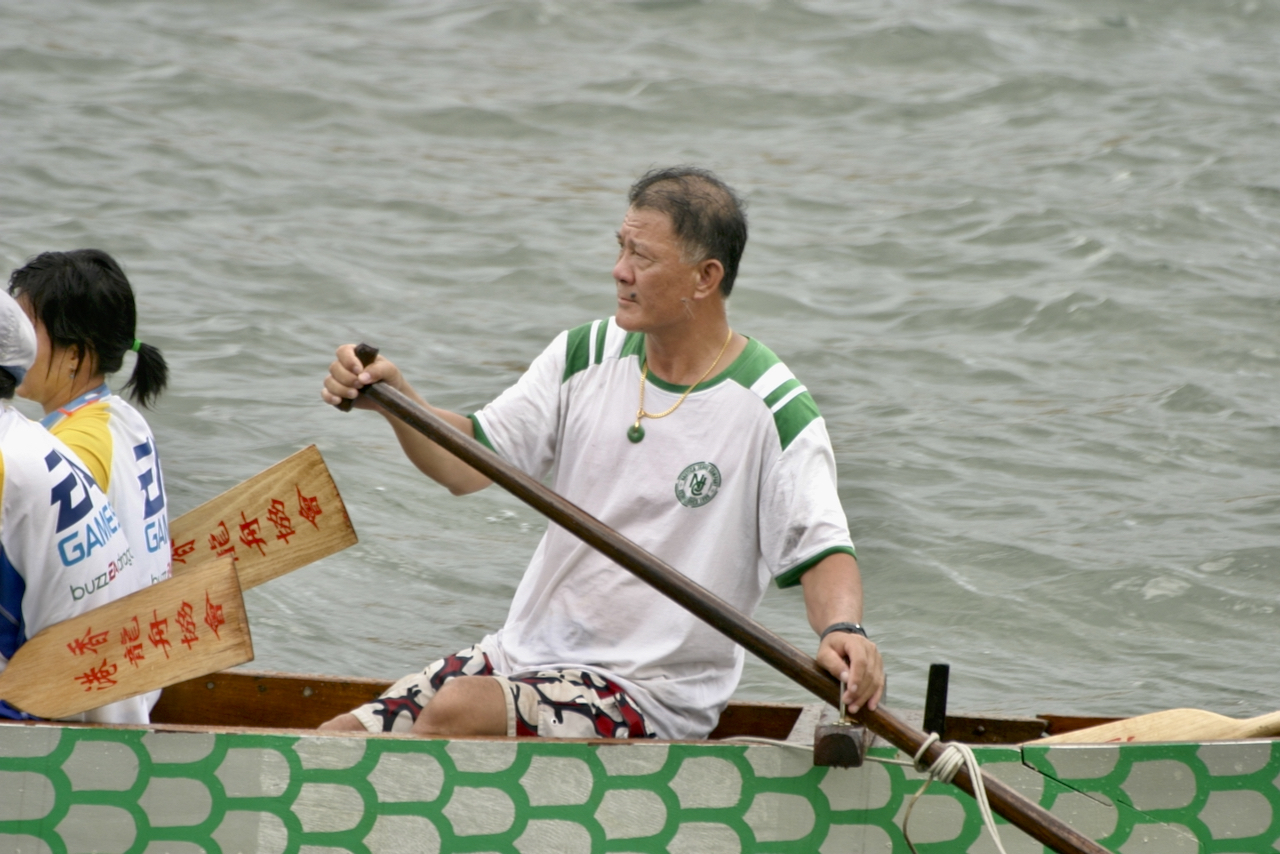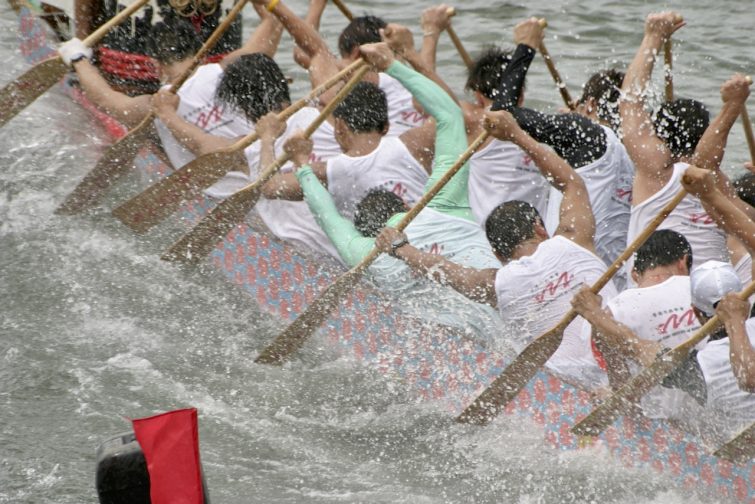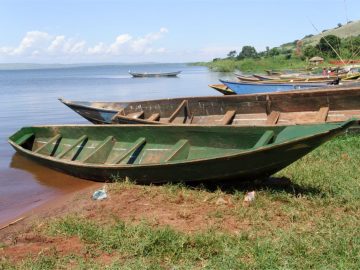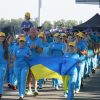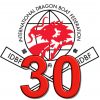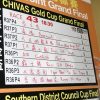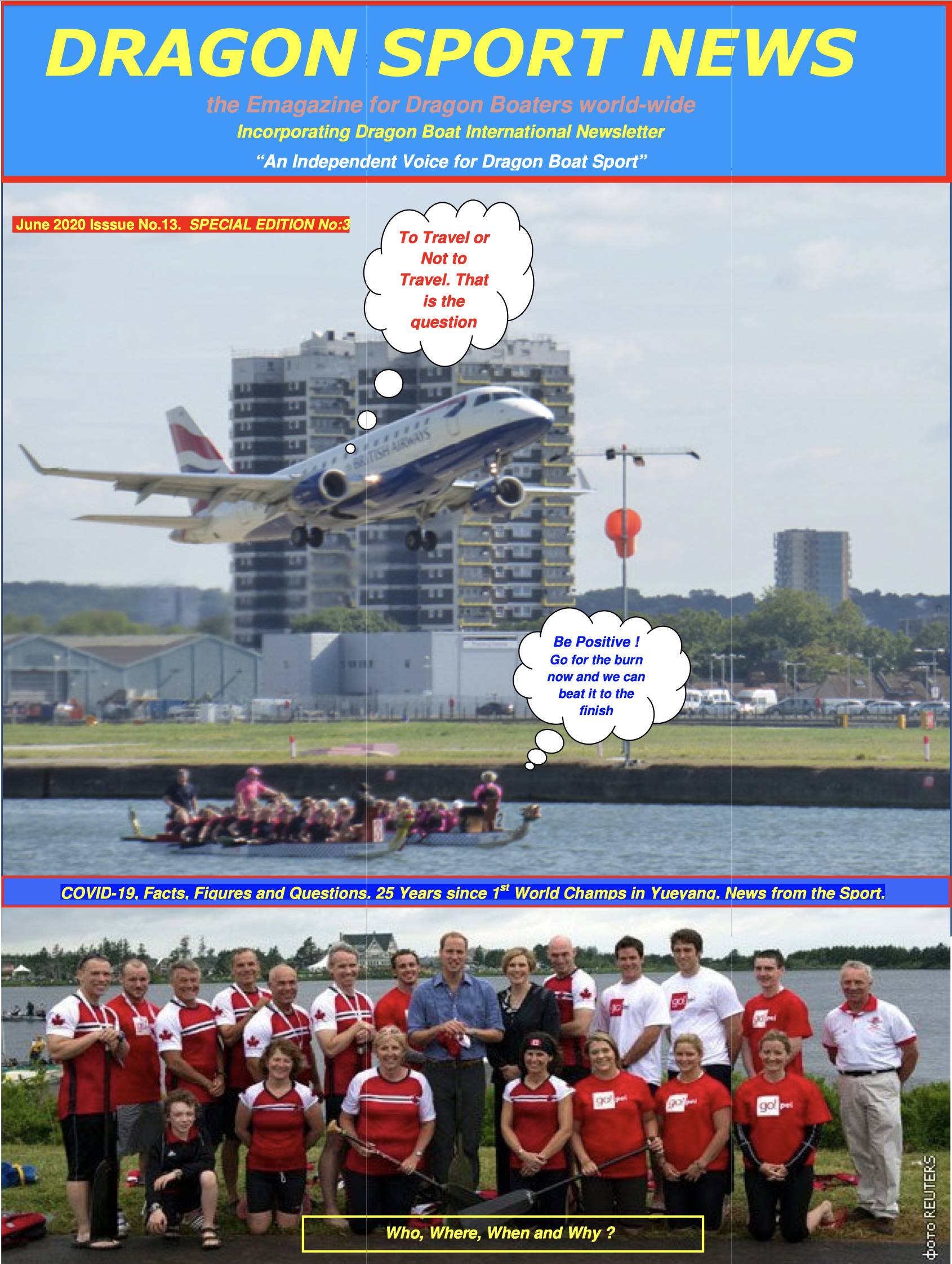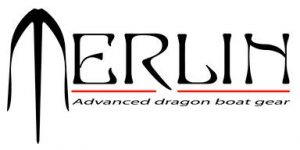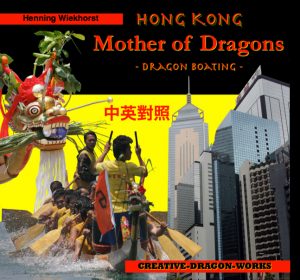“Biomechanics of Dragon Boat Racing” is a four-parts-series of scientific articles written by Sarah Ho to be published in the magazine “Dragon Boat World International” (DBWI), this Part 3 in No. 6 – April 2009.
After completing a bachelor degree in Exercise and Sport Science (University of Sydney) in 2005, she began an honours research project into the biomechanics of on-water dragon boat paddling. At the time completing a PhD at the University of Sydney, she investigated various aspects of dragon boat racing such as: the physiology of dragon boat racing, physique and physiological characteristics of elite paddlers and 3D biomechanics of simulated on-water paddling.
Part 3: Kinematics
Dragon Boat Paddling Technique
The investigation of characters of paddler and paddle motion during dragon boat paddling may assist in identifying ways to optimise dragon boat paddling technique. Dragon boat paddling is most comparable to canoeing where a single flat-bladed paddle is used to achieve propulsion by the rotation of the paddle about a pivot point through similar body movements whilst on a fixed, stable surface. The motion of the traditional flat-bladed kayak paddle also shares similarities with the motion of the dragon boat paddle. Canoeing and kayaking involve development of force through the blade by its interaction with the water in the same way but through the use of different body motions [1].
There are currently no detailed descriptions of the dragon boat stroke in scientific literature. A previous study [1] analysed video data collected during competitive kayaking and canoeing races and highlighted four significant positions during the stroke that were useful in describing variations in paddling technique. These four positions are: paddle entry, paddle vertical position, completion of forward motion of the paddle and paddle exit. Rowing and paddling sports commonly describe rowing and paddling movements by dividing the stroke into entry, drive, exit and recovery phases. These positions and phases have been used to describe the dragon boat stroke (Table 1).
Entry
The dragon boat stroke begins with the entry of the paddle blade square to the line of the boat and is achieved by trunk flexion and rotation, shoulder flexion and elbow extension.
Drive
Once the blade is fully immersed,the paddle is pulled back during the drive phase in a path parallel to the longitudinal axis of the boat. The pull of the blade is achieved by trunk rotation and extension, shoulder extension and elbow flexion.‘Leg drive’– the application of force through the outside foot to the boat, assists in the transmission of the force produced at the blade to the boat.
Exit and Recovery
At the end of the drive phase, the blade is lifted out of the water and returned to the point of entry in preparation for the next stroke.

Table 1. Key positions i) paddle entry ii) paddle vertical iii) completion of forward paddle motion iv) paddle exit) and phases of the dragon boat stroke.
Paddle Angle and Force Production
The optimum paddle entry angle for canoeists as reported by Plagenhoef (1979) who analysed the most successful canoeists in international competition is an angle of 50 – 60° from the horizontal plane anterior to the canoeist. At the catch of the kayak stroke, the paddle blade is at an inefficient angle to produce a significant amount of force in the horizontal direction [2].Thus the angle of the blade at entry should be limited to a position that promotes the development of large propulsive forces immediately following blade entry [3]. The most successful paddlers position their paddle blade ‘square to the line of motion at entry’[1].
The drag force produced at the paddle blade is the predominant source of propulsion of the canoe [4].In order to maximise the propulsive drag forces produced at the blade, the blade should be perpendicular to the water surface after blade immersion [2,4] and this position should be maintained as long as possible. Mann and Kearney (1980) validated this theory by showing that maximum horizontal acceleration of the boat occurred when the paddle was in a vertical position. In a study examining the technique of kayak paddlers ranging in ability from novice to elite using the wing paddle,Sanders and Kendal (1992) found that a distinguishing feature of successful kayak paddlers was full immersion of the blade in a more forward position and argued that this was due to the utilisation of a greater total available surface area of the blade for a longer proportion of the pull phase. Although Mann and Kearney (1980) agree that at vertical paddle position there is greater potential for force production,they argue that this is not due to a greater projected surface area of the blade as suggested by Sanders and Kendal, but due to the body being in an ideal position to produce maximum power at this phase of the stroke.
Toward the end of the stroke when further force production is difficult to achieve, the paddle should be withdrawn to avoid dragging the paddle[2]. Plagenhoef (1979) found that successful paddlers feathered the blade when exiting.
Slip
Slip is the horizontal displacement of the blade relative to the water [3].Efficient paddling involves ensuring the paddle blade is as stationary as possible in the water producing minimal slip [1, 3]. Paddlers who have a small amount of slip have been shown to move their blades a larger distance during the pull phase compared to paddlers who have a large amount of slip[3]. The paddle position that minimises slip is a vertical position [2].
Kinematics of the Paddler
In order to generate an efficient paddling stroke, the paddle must be entered at an optimum angle, close to the front of the boat to maximise the pull distance. Successful paddlers achieved this position by placing the paddle well forward of the body at entry and ensuring the top hand is well forward when the paddle is in vertical position[1].
Mann and Kearney (1980) describe the force production of the kayak blade through a push-then-pull action of ‘thrust’ and ‘draw’ segments.They found that on entry of the paddle blade, the best kayak paddlers positioned their body so that the ‚draw’ shoulder was ahead of the ‘thrust’ shoulder by torso rotation. This helped to increase the distance over which force was applied. If this concept were applied to dragon boat paddling the top hand and bottom hand would act as thrust and draw segments, respectively. However, there is insufficient evidence on the path of the dragon boat paddle to confirm that this principle would maximise the distance for force production in dragon boat paddling.
Plagenhoef (1979) found that a useful measurement for describing the variations in canoe paddle technique was the path of the paddler’s shoulder, elbow and wrist centres. One significant finding from analysis of the joint centre paths was the horizontal distance each hand moved simultaneously which determined the paddle pivot point (Figure 2.8). Successful paddlers were able to achieve a higher pivot point by controlling the motion of the upper hand, which resulted in greater movement of the bottom hand and produced a flatter arc for the path of the blade thereby increasing the distance for propulsion.
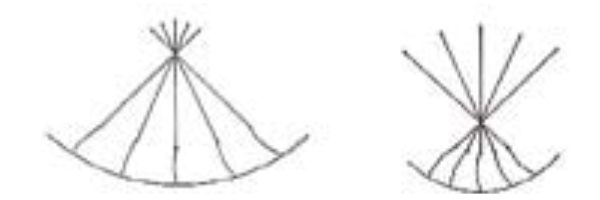
Figure 1.The effect of pivot point on stroke length (obtained from Plagenhoef, 1979).
In summary, the body positions and movements that most contribute to successful paddling techniques are those that allow the paddler to achieve a long pull distance at an optimal paddle angle so that greater propulsive forces can be generated. Although adopting the technique of successful paddlers may improve paddling performance, different paddlers may employ different paddling styles yet produce the same force patterns with their blade [1]. Therefore, paddlers should not necessarily conform to a single ideal style – rather paddling technique should be influenced by anatomical differences, individual strength differences and comfort [1, 4].
A Research Study: Kinematics of Dragon Boat Paddling
In a study conducted at the University of Sydney (Sydney, Australia) in 2006 [5],dragon boat paddlers were recruited from Sydney dragon boat clubs and categorised as ‚elite’ or ‚sub-elite’ based on number of years in state and national crews and performance in recent ergometer trials. Video filming was conducted during the testing to compare characteristics of paddler and paddle movement in order to determine if there were any specific characteristics that contributed to successful paddling performance.
Paddle Kinematics
Paddle angle was defined according to Figure 2.Figure 3 shows the paddle angle curves of an elite and sub-elite paddler during a dragon boat stroke.

Figure 2. Definition of paddle angle.
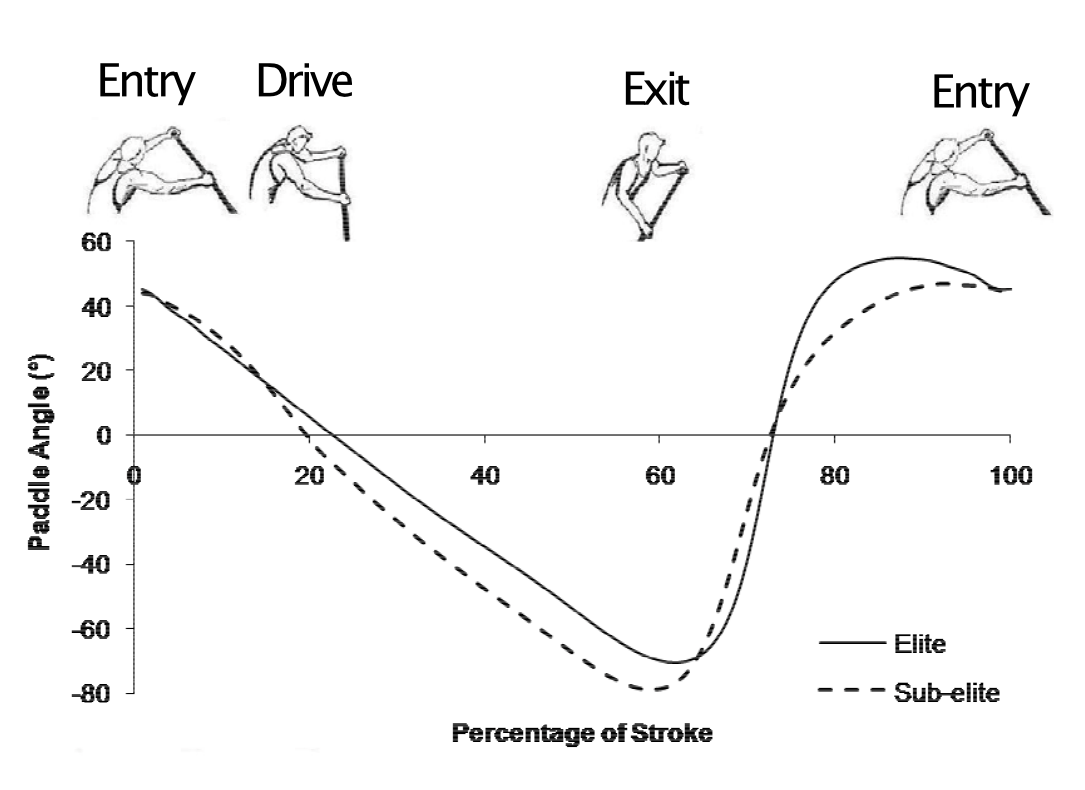
Figure 3. Paddle angle curves of an elite and sub-elite paddler.
During a dragon boat stroke, the paddle is entered at an angle of around 40°. The paddle reaches a vertical position (0°) around 20% of the stroke. Compared to the elite paddler, the sub-elite paddler reaches paddle vertical position earlier but also exits the paddle earlier and at a more negative angle. In order to maximise paddling efficiency (see Part 2), the paddle should be kept at a more vertical angle for as long as possible as this position will increase the horizontal propulsive forces at the paddle blade. Overall, it was found that the elite paddlers held the paddle more vertically further into the second half of the drive phase, contributing to higher paddling efficiency for the elite group during this phase.
Paddler Kinematics
The higher levels of efficiency from peak force to paddle exit in the elite group suggests that there are differences n the kinematics applied by elite paddlers during this period of the drive phase which assist in maximising paddling efficiency. Most paddlers showed similar patterns of shoulder, elbow and trunk movement during corresponding phases of the stroke. Any minor differences between movement patterns are likely to be a result of the individual differences in the drive time to total stroke time ratio between paddlers, although there were differences in joint angles at paddle entry and exit, and range of joint angles during the stroke. Some paddlers were characterised by markedly different movement patterns, suggesting there is variation in dragon boat paddling style among paddlers. This difference could be a factor of the anthropometry of the paddlers and could contribute to variations in the force-time profile.
Although this study found that there were certainly differences in patterns of paddle angle between elite and sub-elite paddlers,there was insufficient evidence to suggest what body movements were used to achieve these differences.Thus, more research is needed in the future to examine the kinematics of the paddler during dragon boat paddling.
The Next Step: 3D Analysis of Dragon Boat Technique
Although video filming provides a simple and straight forward method of dragon boat technique analysis, this method only permits two-dimensional analysis. Aspects of paddling technique such as trunk axial rotation are neglected. Trunk rotation is an important consideration in dragon boat paddling as it maximises the distance over which propulsive forces can be applied. Three-dimensional analysis of the paddling movement will allow investigation of trunk rotation and provide a greater understanding of dragon boat technique.
Three-dimensional analysis will also allow examination of other important kinetic (force) aspects of dragon boat paddling such as feet and seat forces. During dragon boat paddling,‘leg drive’ of the front foot is often emphasised by coaches as it allows the application of force through the feet while the paddle blade is drawn back. This is essential in transmitting the propulsive force at the blade into boat movement.Forces at the back foot and seat may also play a role in trunk rotation and transmission of paddle force to boat movement. As the contribution of these forces to movement of the boat is unknown, further research is needed to investigate these factors.
References
1. Plagenhoef, S., Biomechanical analysis of Olympic flatwater kayaking and canoeing. Research Quarterly, 1979. 50(3): p. 443 -459.
2. Mann, R.J. and J.T. Kearney, A biomechanical analysis of the Olympic-style flatwater kayak stroke. Medicine and Science in Sports and Exercise, 1980. 12(3): p. 183 -188.
3. Kendal, S.J. and R.H. Sanders, The technique of elite flatwater kayak paddlers using the wing paddle. International Journal of Sport Biomechanics, 1992. 8(3): p. 233-250.
4. Pelham, T.W. and L.E. Holt, Biomechanical analysis of two elite canoeists, in In, Bauer, T. (ed.), XIII International symposium for biomechanics in sport: proceedings. Lakehead University, Thunder Bay, Ontario, Canada, July 18-22, 1995, Thunder Bay, Ont., Lakehead University, c1996, p. 83-87. 1996: Canada.
5. Ho, S.R., R. Smith, and D. O’Meara, Biomechanical analysis of dragon boat paddling: A comparison of elite and sub-elite paddlers. Journal of Sports Sciences, 2009. 27(1): p. 37 -47.
